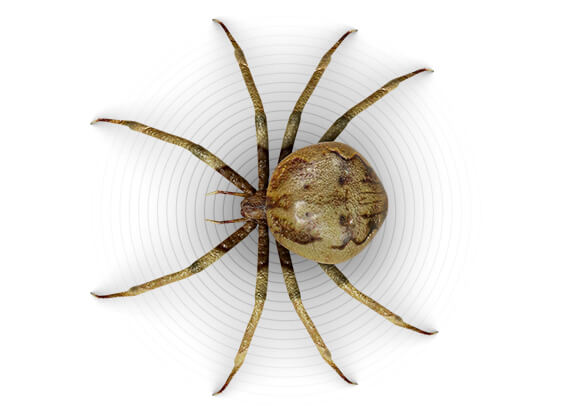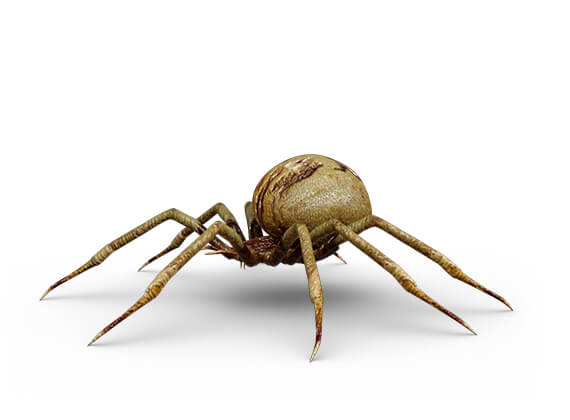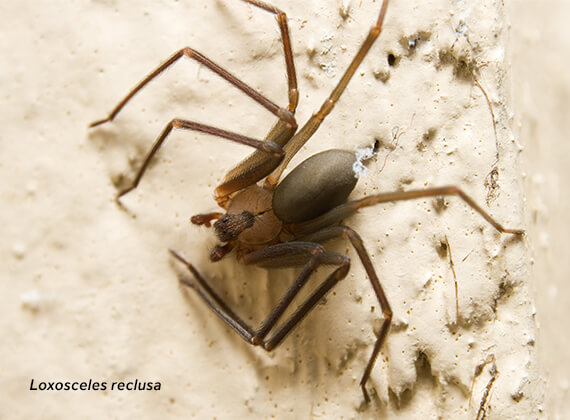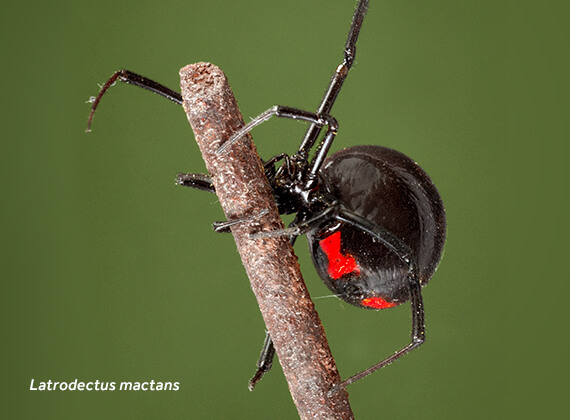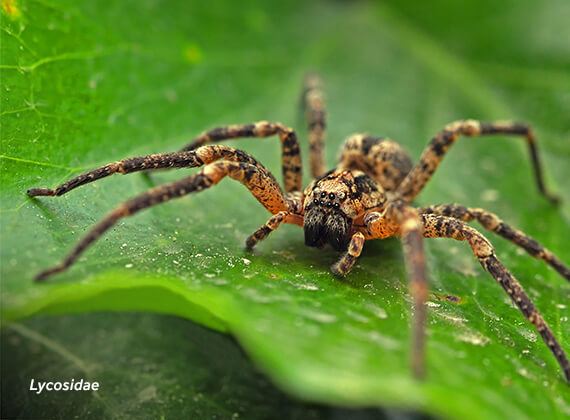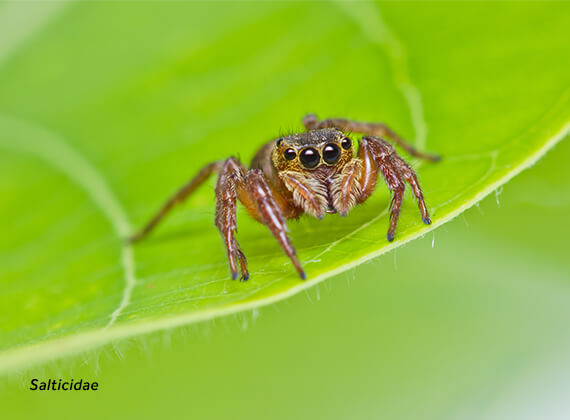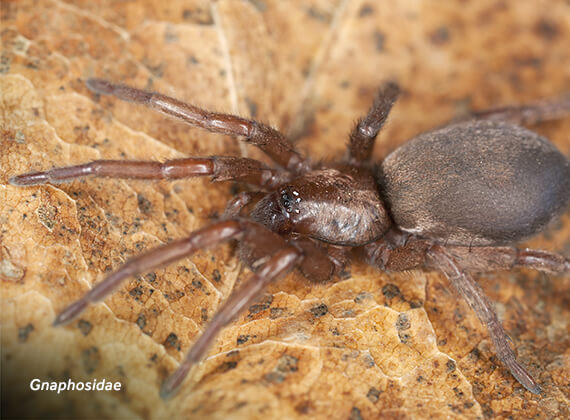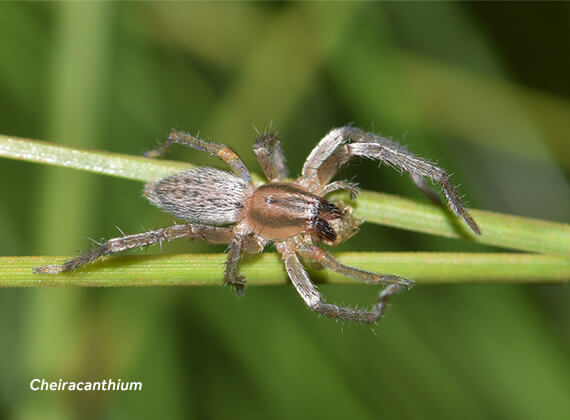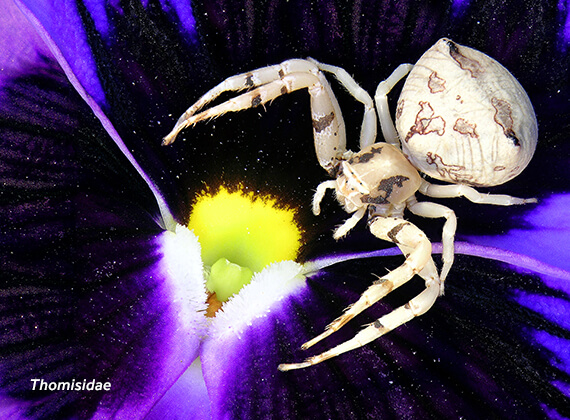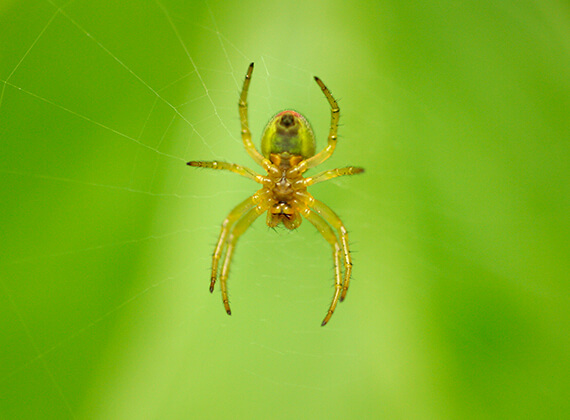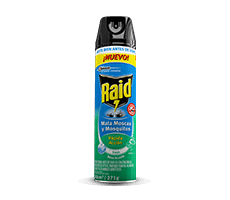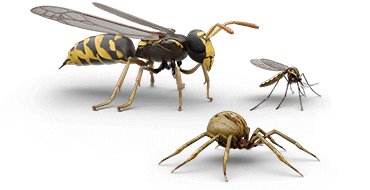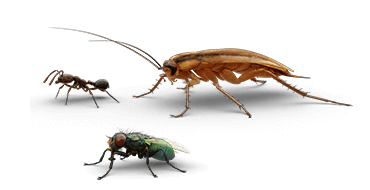Spiders
Araneae
-

SIZE
3/8in to 1in long, not including the legs
-

COLOR
-

BITE OR STING
Yes
-

WINGS
No
COMMONLY MISTAKEN FOR
General Information
Most spiders you find in and around the house are harmless. But if these eight-legged creatures give you the creeps, they’re typically easy to kill with a tissue or a bug spray for spiders. Find out what spiders eat, where they live, and how to help keep spiders out of your house.
-
Spiders have two body parts, eight legs and six to eight eyes.
-
Spiders may actively search for prey, wait in hiding for their prey to pass by, or build webs to trap insects that fly into them.
-
Aside from seeing a spider in your home, the most common sign of a spider is its web or old webs, which are called “cobwebs.”
Details
-
Most spiders are shy and like dark, secluded areas.
-
They can be found both indoors and outdoors.
-
Some spider species require lots of moisture and can be found indoors in damp spaces.
-
Spiders eat other insects, including mosquitoes, flies, moths, and sometimes even other spiders.
-
One study estimates that spiders kill 400 to 800 million metric tons of insects each year.1
-
Spiders are beneficial because they kill many insects. However, webs and spiders themselves can be a scary nuisance. Therefore, few people will tolerate them indoors.
-
There are certain types of spiders that can inflict painful and dangerous bites, including black and brown widows, the brown recluse, and hobo spiders. If you encounter these types of spiders, consult a professional pest control company to help solve the problem.
-
If bitten by a spider, seek medical attention if symptoms worsen, including radiating pain, swelling, sweating, difficulty breathing, fever, chills, or nausea.
-
Don't leave outside lights on for long periods of time as this will attract flying insects, which in turn attract spiders.
-
Reduce lumber piles, bricks, and other outdoor hiding places to a minimum, particularly close to the home.
-
Brush down spider webs when they occur.
-
Destroy visible spider egg sacs immediately. Each sac can contain hundreds of spider eggs.2
-
Use an attachment on your vacuum cleaner to remove webs and individual spiders from walls.
-
Try relocating single spiders by trapping them in a cup and then releasing them outside where they will eat other pests that can be a nuisance.
-
Use a pest control spray to kill spiders on contact.
